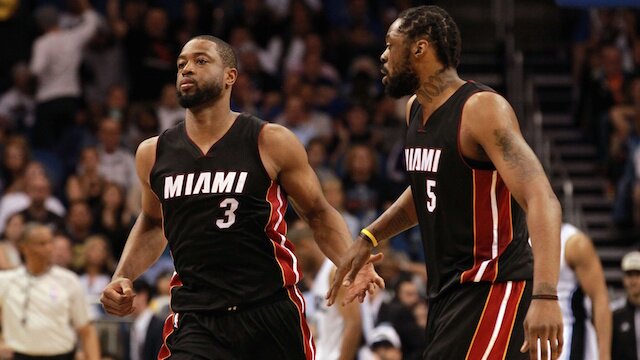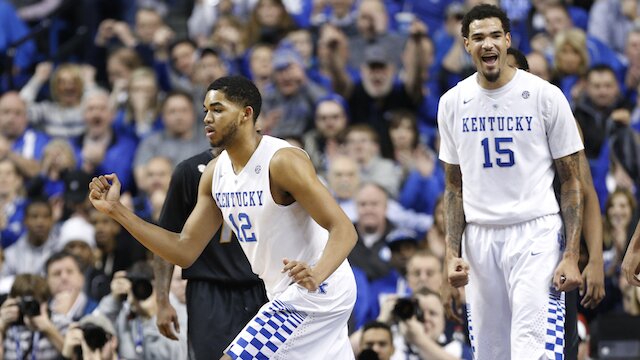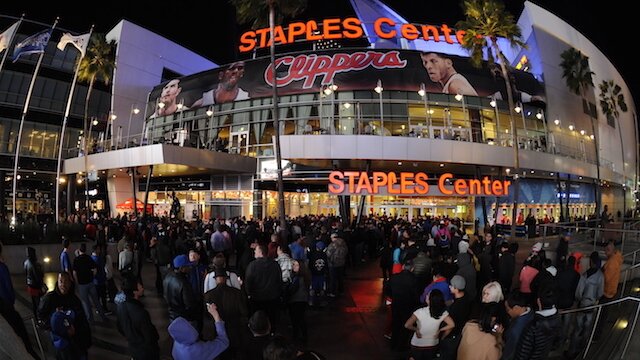How To Fix The NBA All-Star Game
The third wave of voting for this year’s NBA All-Star game has wrapped up, and like every year, fervent conversations are heating up about who belongs and who looks like they may be the biggest snubs.
On one hand, the fact that fans are having these conversations, and that they are making legitimate arguments, speaks to the inordinate amount of talent throughout the league. On the other, the obvious snubs that we see year in and year out tells me the system we have in place for voting players in is simply broken.
For those who may be unaware, the starters in the All-Star Game are entirely decided by fan voting, nowadays handled primarily through Twitter. The reserves are decided by the coach for each conference, keeping in mind that they can’t select anyone from their own teams. This invariably leads to some unexplainably bad choices by the fans, who are usually beholden to their emotions rather than their brains, and also some equally questionable decisions by the coaches, who tend to reward the high-effort and highly coachable players that they favor.
This has led to players like Yao Ming — the year he played in five total games — and Jamaal Magloire — the one year he wasn’t overwhelmingly mediocre– being voted into the game. Needless to say, it is far from a perfect system.
Fixing the Voting
It’s one thing to complain about something being irrational. It’s another to put forth a reasonable solution, so I’d like to focus on what can be done to remedy the voting system.
First, and most importantly, the fan voting needs to be removed altogether. I get the concept of trying to make the fans feel involved in the game, thus improving the likelihood they will actually tune in, but as we will see later on, this obviously isn’t the case.
If we want to improve the odds of people watching, I’d argue that the best way to do that is to put the best product on the court. Allowing the fans to vote the starters in doesn’t always ensure this happens, nor does allowing the coaches to vote players in. If we want to achieve an actual, objectively obtained and rational roster, we should instead rely upon those that watch more basketball than anyone — the writers.
The NBA’s Hall of Fame voting process is shrouded in mystery in terms of who actually does the voting, but in the other three major sports, sports writers are responsible for determining who makes it into the hall of fame, and their votes are overtly transparent. I think if we have enough confidence in them to make such a decision, allowing them also select who makes it into the All-Star game makes complete sense, especially since All-Star appearance are an implicit factor in determining Hall of Fame eligibility.
By creating a panel of objective voters, we can eliminate the irrational All-Star selections previously discussed, and avoid the inevitable token selection, a la Kobe Bryant this year. This may alienate a small portion of potential viewers, but in the end, a better product will be achieved, and in a laissez faire economy, we all know that quality usually wins out.
And how much more fun would the arguments about All-Star selections be if they were independently decided, and completely transparent? I’d love to see Zach Lowe arguing his case against Kobe being an All-Star and the devout Kobe defenders staunchly defending their case. That would be Twitter gold. And the public debates between writers defending their selections might be even more fun.
Viewership
But, voting isn’t the only thing broken about the All-Star Game. Viewership has been on a gradual decline since the 1999 lockout. At its peak, in 1993, the game secured a 14.3 Nielsen Rating, meaning that 14% of market share was captured, the equivalent of 22 million viewers. That trend continued, albeit at a slightly decreased rate for the majority of the ‘90s.
| Net | Year | Result | Rating |
| NBC | 1992 | West 153, East 113 | 12.8 / 26 |
| NBC | 1993 | West 135, East 132 | 14.3 / 22 |
| NBC | 1994 | East 127, West 118 | 9.1 / 14 |
| NBC | 1995 | West 139, East 112 | 10.7 / 17 |
| NBC | 1996 | East 129, West 118 | 11.7 / 20 |
| NBC | 1997 | East 132, West 120 | 11.2 / 19 |
| NBC | 1998 | East 135, West 114 | 10.6 / 17 |
For whatever reason, following the 1999 NBA lockout, the viewership sharply declined until stabilizing at a significantly reduced rate, a rate that has remained fairly steady since about 2004
| Net | Year | Result | Rating % / Millions |
| NBC | 1999 | Cancelled due to lockout | None |
| NBC | 2000 | East 137, West 126 | 6.9 / 12 |
| NBC | 2001 | East 111, West 110 | 5.1 / 8 |
| NBC | 2002 | West 135, East 120 | 8.2 / 15 |
| TNT | 2003 | West 155, East 145 (OT) | 6.6 / 12 |
| TNT | 2004 | West 136, East 132 | 5.1 / 10 |
| TNT | 2005 | East 125, West 115 | 4.9 / 8 |
| TNT | 2006 | East 122, West 120 | 4.3 / 8 |
| TNT | 2007 | West 153, East 132 | 4.2 / 7 |
| TNT | 2008 | East 134, West 128 | 3.8 / 6 |
| TNT | 2009 | West 146, East 119 | 4.5 / 7 |
| TNT | 2010 | East 141, West 139 | 3.8 / 6 |
| TNT | 2011 | West 148, East 143 | 5.2 / 9 |
| TNT | 2012 | West 152, East 149 | 4.4 / 7 |
| TNT | 2013 | West 142, East 138 | 4.6 / 8 |
| TNT | 2014 | East 163, West 155 | 4.3 / 7 |
So, what exactly changed at that point to cause such a fall off? And what can be done to bring the amount of people watching back to the levels seen in the early ‘90s?
Improving the Viewership
The most obvious thing that happened in 1999, besides the lockout that caused a condensed 50-game season, was the retirement of Michael Jordan. His presence in the game alone was enough to make a lot of people tune in. But, could that really be the sole cause for the sharp decline?
Probably not. After the 1999 lockout, a lot of longtime NBA supporters began to develop a distaste for the league. The ratings for the NBA in general began to decline, not just the All-Star game. In 1999, the Nielsen Rating for the NBA on network television was 4.3. The closest the ratings have come to approaching that mark since then was in 2012, with a 3.3 rating, a full percentage point of the population lower.
So it makes sense then that the ratings for the All-Star game would experience a similar decline. That said, the difference between peak ratings and more recent ratings are much more stark than the trend for the NBA in general. While fewer people are in fact watching the NBA, a higher percentage of those fans that had historically tuned in for the All-Star game, are now foregoing it altogether.
So the question is, what can be done to capture the attention of the existing population of NBA fans? Again, the answer seems to be relatively simple — create a better product.
This doesn’t mean selecting the right players, but also should include changing the current format for the game. There is no reason, especially in the current environment of single conference superiority, that the game should be East vs West.
Here’s my solution. Pick the best 25 players from across the league, regardless of conference, identify four captains, and have them make their own teams — five teams of five. Then, simply play to 15 by ones and twos, with the winners staying on the court, just like you would see in your local pickup game. Losers sit out until their turn comes around. The team with the most wins out of 10 games played is deemed the champion.
This would provide a real reason for players to give actual effort during the course of their time on the court. Playing for pride is one of the most motivating factors ever. Plus, it would create the ultimate reason for fans to watch.
Can you imagine the intrigue surrounding who the captains select for their team? What if LeBron James picked Dwyane Wade over Kyrie Irving? Or if Steph Curry went with James Harden over Klay Thompson? You could see a lineup with Marc Gasol, Anthony Davis and Blake Griffin with Kevin Love and Russell Westbrook in the backcourt. There would be no predetermined positions, meaning the possible combinations would be endless.The storylines surrounding the team selection alone would be reason enough to watch.
There really is no reason this couldn’t work since the All-Star Game as constituted is purely an exhibition game, and determines nothing of significance like it does in baseball. If you were really concerned about not having the fans involved in voting who makes the roster, give them some input into the selection of teams from the predetermined pool of players. The possibilities are truly limitless with this format.
No Game Like It
This solution would make the NBA All-Star Game the most unique of any sport, and certainly the most intriguing. I could say with near certainty that the ratings would skyrocket as a result of these changes. As long as there is nothing truly on the line, and that’s exactly how it should be, there is also no reason to not experiment with the format of the game. It has been on a perpetual decline in terms of interest and viewership, and something needs to be done to fix it. And as long as we are exploring changes, why not consider my solution? It certainly beats the meaningless and dull game we are forced to watch on a yearly basis, which makes even the most adamant of basketball fans cringe. I know I’d watch.
Court Zierk is a Columnist for www.RantSports.com. Follow him on Twitter @CourtZierk, “Like” him on Facebook or add him on Google.
LeBron James Back In MVP Race After Impressive Win
LeBron James continues to climb the MVP ladder after an impressive performance in the Cleveland Cavaliers’ win over the Golden State Warriors. Read More
Lakers Must Replace Ronnie Price With Vander Blue
Ronnie Price is lost for the season and leaves the Los Angeles Lakers with only two healthy PGs on the roster. Find out why they should take a chance on Vander Blue for the remainder of the season. Read More
5 Greatest Moments of Hamilton's Career
Richard Hamilton may not be one of the greatest of all time, but he was an integral part for the Pistons of the 2000s. On the day he retires, here are Hamilton’s five greatest moments in the NBA. Read More
Beasley Will Be Great Fit With Miami Heat
The Miami Heat have signed Michael Beasley to a 10-day contract, and this is a great move for the team. Read More
Rondo’s Drama Could Jump-start Knicks or Lakers
Rajon Rondo’s clash with Rick Carlisle could push the free agent to a big, desperate market. Read More
2015 NBA Draft: 5 Players the Bulls Should Target
It’s never too early to look ahead at the 2015 NBA Draft. Here are a few prospects the Chicago Bulls should be looking at this summer. Read More
5 Things Celtics Must Improve After All-Star Break
The Boston Celtics are in the midst of rebuilding, meaning there are plenty of improvements to be made. Here are five for the team to make after the NBA All-Star Break. Read More
NBA vs. College Basketball Debate A True Toss-Up
There is a heated argument between which is better, the NBA or the college basketball, but maybe they both have some merits. Read More
Theatrics Cover Up Awful Showing From Heat
Poor play and late-game heroics once again sum up the Miami Heat’s season. Read More
5 Players Knicks Should Target In 2015 NBA Draft
These five players should be targets for the New York Knicks in the 2015 NBA Draft. Read More
5 Players Celtics Should Target In 2015 NBA Draft
The Boston Celtics' ongoing rebuild could use one of these five prospects in the 2015 NBA Draft. Read More
Clippers DeskSite App Improves Fan Experience
The Clippers found a new way to improve their fans experience. The new app with DeskSite created a new interactive platform to provide exclusive content for their avid fans. Read More







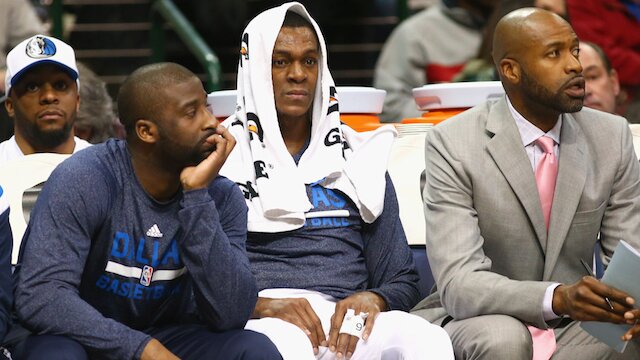
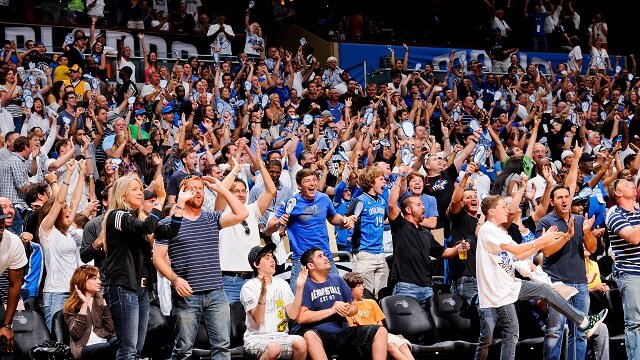
 @courtzierk
@courtzierk 





